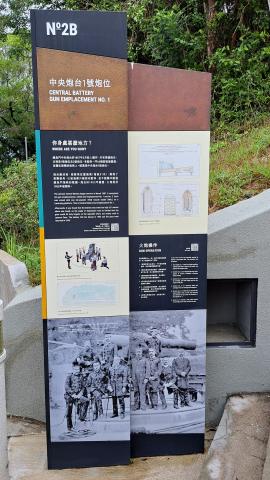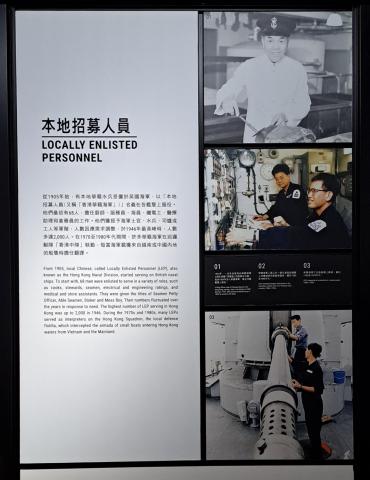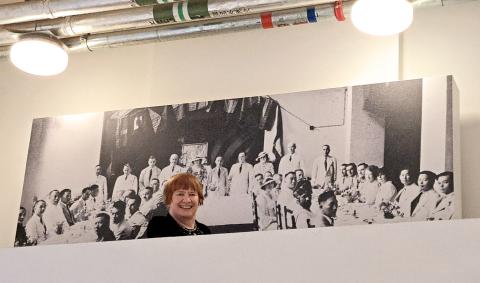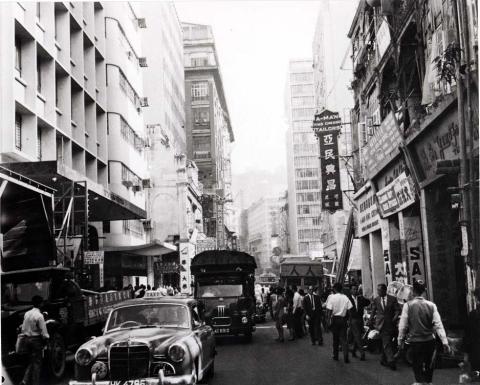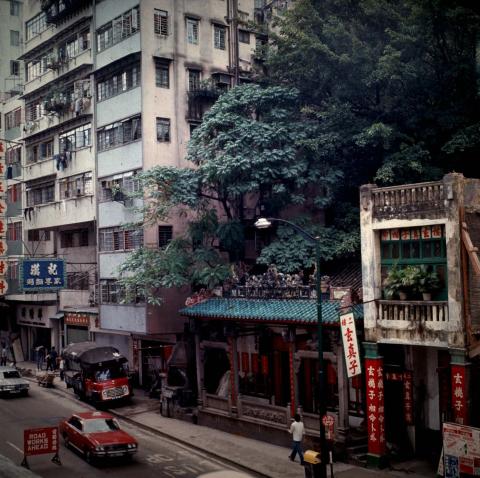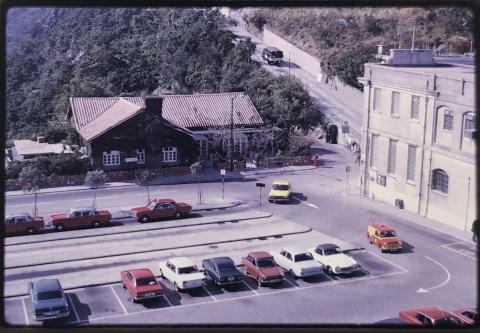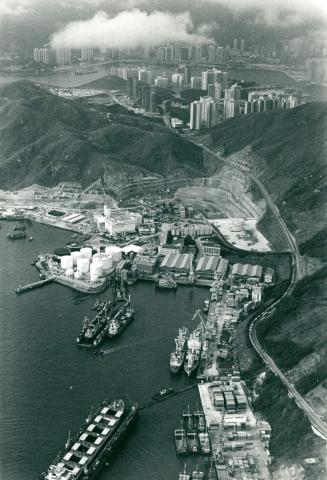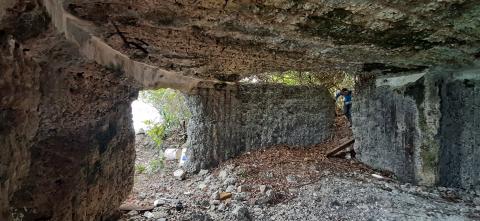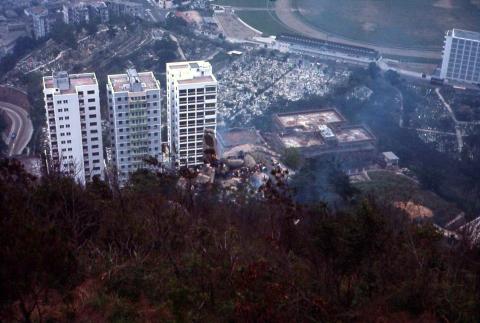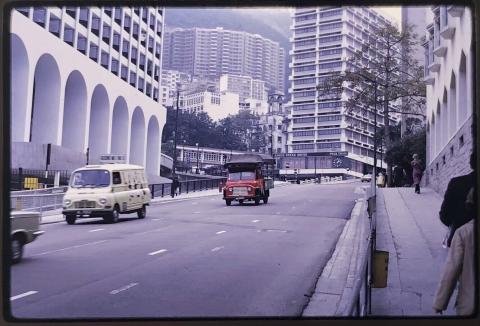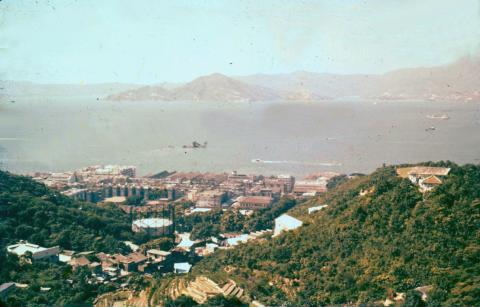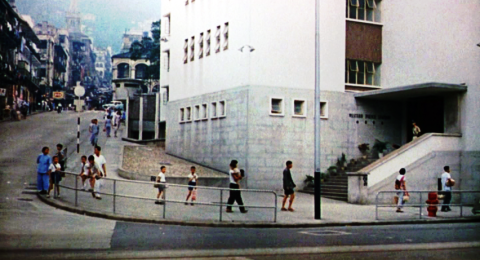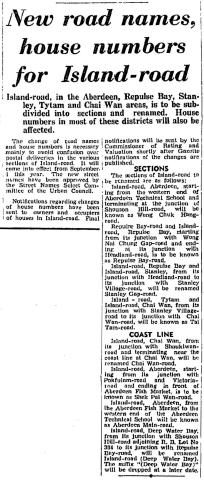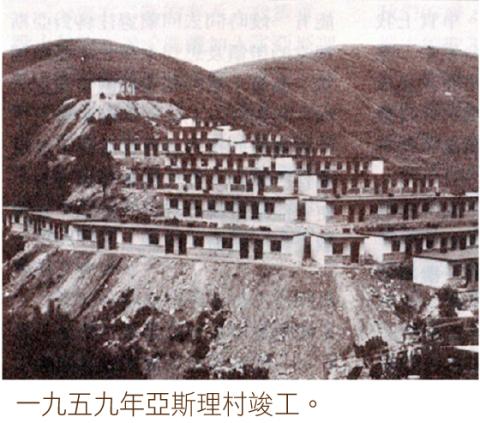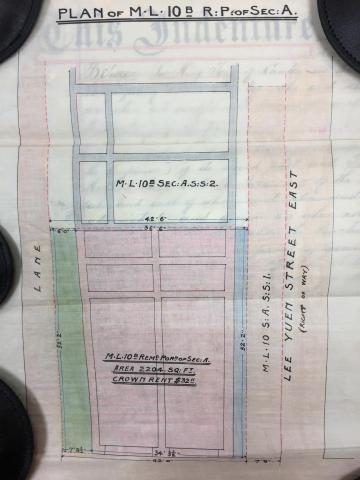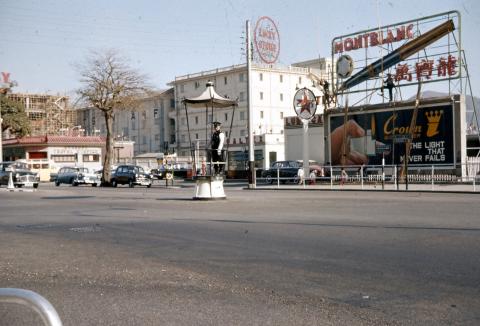What's new and updated on the Gwulo website:
General
- This is a Sternberg postcard of someone in the stocks in Hong Kong. If the Chinese characters are clear enough to read, and you can help me to translate it, please could you click on the photo and leave a comment there with the English version? I'm curious to see if we can find his case mentioned in the old newspapers:
-
In last week's photo, Winning a race at Happy Valley, I asked who Mr Blank might have been. Readers note that it was almost definitely a made-up name, commonly used by horse-owners at the time.
-
HMS Tai Mo Shan, mentioned in the previous roundup, appeared in the Mamma Mia! movie: watch video clip
-
Rebecca would like to hear from anyone with information about Scots in Shanghai up to 1945.
-
Answers to the earlier question about UK - HK travel in late 1860s.
I had a triple-helping of history on Saturday, starting at 10am with a guided tour of ...
The Museum of Coastal Defence (MCD)
The museum has been closed since 2018 for a major revamp, only re-opening a few weeks ago. I was a bit apprehensive about what we'd see - 2023 Hong Kong is a very different place from 2018 Hong Kong, so how had the museum been affected?
Outdoors
The museum is really two in one: outdoors focuses on the history of the physical site, then indoors are the exhibitions introducing Hong Kong's broader military history.
The British army used the site from the 1880s through to the 1950s, and many of their buildings have survived. The old buildings are mostly accessible to visitors, so there is lots to explore. It's also a beautiful location, with views west into Victoria harbour, north across to Lei Yue Mun, and east out to the harbour entrance.
There are clear information panels at each of the points of interest. Here are a couple of examples:
They show more detail than I remember seeing on the old panels. If you'd like even more information you'll notice the new displays also have QR codes that you can scan to watch animations of how the different equipment worked.
Indoors
At the top of the hill we went in to the redoubt to visit the exhibition galleries.
The information shown outdoors is dictated by the site, e.g. the panel next to a gun emplacement will talk about the guns that were installed there and the shells they fired. But the indoors area was a blank canvas - what topics had the museum chosen to show, and how would they interpret the subjects?
I'd worried that the MCD would become a museum about the Opium War, East River Brigade, the PLA, and little else. I'm happy to say that isn't the case. Each of those topics is covered, and rightly so, but if we take the WW2 resistance as an example, there are displays on both the East River Brigade and the British Army Aid Group (BAAG).
The redoubt's 11 galleries are divided as follows:
- Military Presence under Successive Dynasties
- Unequal Treaties and the Cession of Hong Kong
- Military Arrangements
- Port Facilities
- The Volunteers
- Multi-Ethnic Soldiers
- Narrative of the War of Resistance
- Join Hands to Resist Japanese Invasion
- Japanese Invasion of Hong Kong
- Anti-Japanese Guerrillas behind Enemy Lines
- The Chinese People's Liberation Army Hong Kong Garrison
It's good to see the new exhibits put a stronger emphasis on the non-British soldiers who were based in Hong Kong. We learn about the Indian and Gurkha soldiers who were stationed here, the mix of nationalities in The Volunteers, and the local Chinese who worked in a variety of roles in the British Armed Forces. There also several displays that look at how the British Armed Forces and local residents interacted.
The curators have packed a lot of valuable material into each gallery, not just the written information but photographs, other paper ephemera, and historic items that illustrate that gallery's theme. In each case there was lots of information that was new to me. There are also touch-screen displays that let the visitor explore even more information.
I had to leave after around two and a half hours, but there was still much more that I hadn't seen, so allow plenty of time for your visit or consider making several shorter visits.
Well done to everyone who was involved with this update to the Museum. "You can't please all of the people all of the time" surely applies to museum curation, but the displays are a well-balanced introduction to Hong Kong's military history, giving a valuable record of both the technical history of the site, and the melting-pot of nationalities and experiences that make's Hong Kong's colonial history so unique.
Next, let's see the museum get the promotion it deserves. I heard Singapore's Battle Box and Fort Siloso mentioned several times on the tour, and I remember seeing them advertised in handout leaflets as I arrived at Singapore's Changi Airport. Can MCD get similar treatment at Chek Lap Kok?
Thank you to OMRS (Orders & Medals Research Society HK Branch) for arranging the tour, and for Dr Kwong Chi Man for leading us around the site. Chi Man is one of the Military History advisors to the museum, and was deeply involved in the revamp, so we couldn't have had a better guide.
After leaving the MCD I hopped on the MTR to Central, grabbed a quick sandwich and then went up to ...
Incarcerated Women – Ninety Years in Victoria Gaol
Patricia O'Sullivan gave this talk in Tai Kwun, as the final event in their Gender Salon series. Patricia drew on the research for her second book, Women, Crime and the Courts: Hong Kong 1841-1941, to share stories of the women who worked in, or were imprisoned in, the Gaol. After the talk there was a discussion with the audience.
Patricia has strong family ties to Tai Kwun, as several of her relatives served as policemen in the Central Police Station during the late 19th- and early 20th-centuries. After the talk she posed in front of this 1937 photo showing one of her more distant relatives at their leaving do.
In a satisfying link between past and present, the old photo was taken in what had been the Central Police Station's gymnasium. The gym has become Tai Kwun's Duplex Studio, the same venue where Patricia gave her talk and posed for the photo above.
Curator's Tour: Gender & Space exhibition
The Duplex Studio was also the site of the Gender & Space exhibition:
Gender & Space adopts a gender lens to revisit the history of our heritage site over its first hundred years from 1841 to 1941. It seeks to redress the underrepresentation of women in the gendered spaces of the Central Police Station compound by sharing the stories and experiences of those often overlooked to fill a gap in its history.
I was very lucky to have the chance to join a tour of the exhibition, led by one of its curators, Senia Tong.
When I was searching for photos of this site for Crime, Justice and Punishment in Colonial Hong Kong, it was hard to find photos taken of the the people who worked there, and I never did find any of the matrons who ran the women's prison. The exhibition highlighted the lack of women in the photographic record by displaying an old photo of male prison guards next to a plain text list of the matrons' names.
In other areas the exhibition showed many interesting photos I hadn't seen before, including an example of the identity card that prostitutes were required to keep. The photographer's name was clearly shown on the card: A Fong. I normally associate his name with large, scenic, albumen photos, but getting the contract to be photographer for the prostitutes' ID cards must also have been welcome as a steady source of work.
Your visits
Both the MCD and Tai Kwun are large sites by Hong Kong's standards, and reward time spent wandering around. We're forecast a spell of cool, dry weather, perfect for a bit of wandering!
- MCD: Opening hours, map, etc.
- Tai Kwun: Unfortunately the Gender & Space exhibition has just come to an end, but check out their list of Exhibitions & Programmes to see what else is on
- OMRS: The society organises a regular series of talks and walks. Looking at their List of Upcoming Events, there's another chance to catch Patricia! On 1 Feb she's giving a talk about some of the men from Hong Kong who joined up and fought in WW1.
Places
- Hong Kong
- Black Rock, Happy Valley Racecourse [????- ]
- 5 Broadwood Road - IL 1911 [????-????]
- "Kwan Tai Lo" Milestone - Tai Tam Reservoir Road [????- ]
- Luk Hoi Tung Hotel [????-????]
- Mount Kellett [????- ]
- Shiu Fai Terrace
- Three Houses on 4A - E Shiu Fai Terrace [1965- ]
- 5 Shiu Fai Terrace [c.1930-c.1970]
- 6 Shiu Fai Terrace [c.1930-c.2009]
- Sheffield Garden [1971- ]
- Three Houses on 4A - E Shiu Fai Terrace [1965- ]
- Squatter Village next to Tiger Balm Garden [c.1950-1995]
- Stanley Mosque [1937- ]
- Western Police Station [????- ]
- Wong Nai Chung (Wong Nei Chong) Road Government Quarters [????-????]
- 12-14 Wood Road, Wanchai [c.1956- ]
- Black Rock, Happy Valley Racecourse [????- ]
- Kowloon
- Caltex Petrol Station, Salisbury Road [????-????]
- The Golden Phoenix [1958-????], restaurant and nightclub
- 51-57 Hankow Road, Kowloon [c.1948- ]
- Lei Yue Mun Quarry [????- ]
- Punjab Buildings [????-????]
- Caltex Petrol Station, Salisbury Road [????-????]
- New Territories
- Caltex / Chevron Oil Depot Tsing Yi [c.1970- ]
- Tai Wo Hau estate [c.1961-c.1977]
- Caltex / Chevron Oil Depot Tsing Yi [c.1970- ]
People
- Stanley Camp internees:
- Leslie William Robert MACEY [1905-1988], sanitary inspector
- Stanley Herbert Isaac MARVIN [1909-1972], prison officer, and his wife Clementina Maria MARVIN (née FERNANDEZ, aka Linda) [1913-2003]
- George Henry Abel MORRIS [1907-1983], health inspector
- Harry William PAGE [c.1874-1945], ex-Dairy Farm
- Aileen WOODS [1886-1970]
- Leslie William Robert MACEY [1905-1988], sanitary inspector
- Other
- Stanley Martin BANFILL [1907-2007], doctor with the RCAMC
- Leep-chee CHOA [1859-1909], father of Po-sien CHOA [????-????] and Po-mien CHOA [????-????], grandfather of Rudy CHOY [1910-1992]
- Austin COATES [1922-1997], worked in the Hong Kong Government after WW2, then as an author. One of his books is A Mountain of Light, a history of the Hong Kong Electric Company.
- Patricia Kathlyn Sheila DENHOLME (née PASCO, aka Paddy) [1923-2004]
- Charles DRAGE [????-????], MI6
- Andrew PEFFERS [1893-1954], Brigadier in British Army
- Audrey RODRIGUES (née ABLONG) [????-2023]
- Loeng SIAO (aka Siao Fong-fong / Josephine ) [1947- ], famous Hong Kong actress
- Col. Simson, A.D.M.S., China Command".
- Osler Lister THOMAS (aka BAAG No. 44 / BAAG No. 74 (?) / 譚藹勵) [1921-2009], BAAG
- Eileen WHITCHELL [????- ], in the SOE in WW2
- Stanley Martin BANFILL [1907-2007], doctor with the RCAMC
Photos
Click to see all recently added photos.

